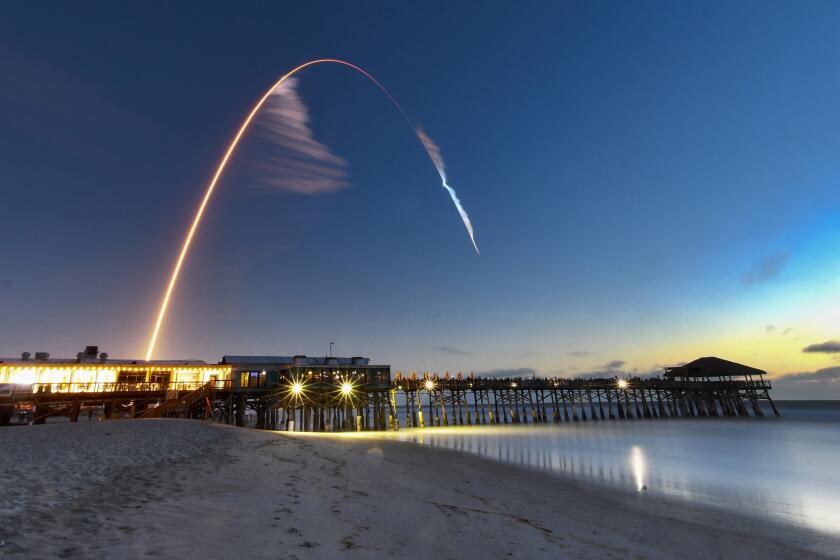NASA and Boeing delay crewed Starliner flight over safety concerns

- Share via
NASA and Boeing Co. said they were standing down from plans to send a crewed test flight of the Starliner spacecraft to and from the International Space Station.
This is the latest of several setbacks to Boeing’s Starliner program. It had planned to launch its test flight on July 21, which would have been Starliner’s first time transporting humans to space.
In a news conference Thursday, NASA and Boeing said they had recently discovered two new concerns with Starliner, including flammable tape and issues with the vehicle’s parachutes. They said they’ll spend the next five to seven days figuring out how to move ahead with the schedule, but did not give a new estimated launch date.
“We can say we’re disappointed because it means a delay, but the team is proud that we’re making the right choices,” said Mark Nappi, vice president and program manager for Starliner at Boeing.
On May 25, a NASA safety advisory panel had expressed concerns about outstanding issues that needed to be resolved with Starliner ahead of its planned launch date, including problems with the vehicle’s software as well as its parachutes.
The Starliner capsule was thrown off course by a faulty timer, Boeing and NASA said. It is supposed to carry astronauts soon.
During a meeting of the panel, safety advisors acknowledged that some of the issues were long-standing and others emerged only recently during analysis and testing. The panel urged NASA to create an independent team to take a “deep look” at the problems.
“Given the number of remaining challenges to certification of Starliner, we strongly encourage NASA to step back and take a measured look at the remaining body of work,” Patricia Sanders, chair of NASA’s Aerospace Safety Advisory Panel, said during the meeting. NASA later released a list of the remaining items that needed to be handled ahead of Starliner’s first crewed spaceflight.
Boeing and NASA had already delayed this launch test several times. The pair had postponed the flight to July from the end of April. Before that, they had set to launch Starliner in February. The delays have cost Boeing as much as $883 million since 2020, the company has said.
Boeing designed and developed Starliner for NASA’s Commercial Crew Program. As part of the program, two companies — Boeing and Elon Musk’s Space Exploration Technologies Corp. — were contracted to build vehicles that could ferry astronauts to and from the International Space Station. SpaceX’s spacecraft, Crew Dragon, successfully flew its first astronauts to the station in 2020.
Starliner has also suffered numerous technical glitches, both in flight and during testing. Boeing was forced to conduct two uncrewed flight tests of the vehicle after software issues prevented Starliner from reaching the space station on its first try. The company did successfully send Starliner to the station in May 2022, but that flight also suffered minor technical malfunctions throughout the mission.
More to Read
Inside the business of entertainment
The Wide Shot brings you news, analysis and insights on everything from streaming wars to production — and what it all means for the future.
You may occasionally receive promotional content from the Los Angeles Times.











